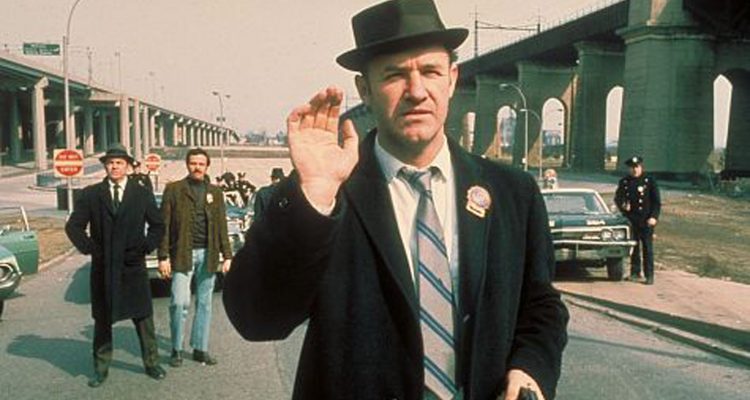 “The Exorcist” (1973)
“The Exorcist” (1973)
In a world of tentpoles and franchises, it’s almost unthinkable that a firmly R-rated horror film (one in which a young girl masturbates with a crucifix and says the line “Your mother sucks cocks in hell,” no less) could be not only be a giant hit, but rank among the ten biggest grossers in history. And an top of those achievements, “The Exorcist” remains a stone-cold horror classic as well. Starting off as Father Merrin (Max Von Sydow) confronts the demon Pazazu in Iraq, we’re soon halfway across the world, as famous actress Chris MacNeil (Ellen Burstyn) notices horrific changes in her 12-year-old daughter Regan (Linda Blair). Before long, doctors start to take more seriously the idea that Regan might, as she claims, be the Devil herself, and Father Karras, whose faith is falling apart, along with Father Merrin, a renowned exorcist, are brought in to drive the demon away. Tapping into primal fears — about our children, not to mention his satanic majesty himself — Friedkin brings the same realism that turned the cop genre on its head to the horror film, particularly thanks to a fine cast (Burstyn, Von Sydow and Jason Miller), and the methods that Friedkin used to freak them out on set, including firing a gun mid-scene. And it’s because of that realism that the film is so absolutely terrifying; visceral and painful and searing, even after years of imitation by lesser films. It’s worth noting that you should stick with the original, rather than 2000’s “Version You’ve Never Seen.”
 “Sorcerer” (1977)
“Sorcerer” (1977)
When you have a hit of the size of “The Exorcist,” you pretty much get to do whatever you want. For Friedkin, he decided to remake one of the best-loved thrillers in cinema history, Henri-Georges Clouzot‘s “The Wages Of Fear,” with a then-massive $22 million budget, and a lengthy, globe-trotting production schedule (trumpeted in the trailer as lasting two years, in five countries, on four continents). And unsurprisingly, it was attacked as a classic example of directorial hubris on release, and flopped, in part because of the release of “Star Wars” a month earlier. But the film has had its critical reputation revived over the years (although legal issues are currently preventing screenings) and deservedly so. The plot remains much the same as the original: four international nomads, led by Roy Scheider, hiding out in South America are tasked with the potentially lucrative (and possibly fatal) job of driving trucks containing highly unstable explosive nitroglycerin across the mountains, in order to quell a fire at an oil well. It’s ten minutes shorter than Clouzot’s film, but the narrative does feel a little more languid, Friedkin fleshing out the backstories of his protagonists, and it’s less lean and honed than the original. But it also helps to make the film a slightly different, more textured beast, while Friedkin handles the white-knuckles suspense sequences with all of his directorial tools, not least the astonishing suspension bridge sequence. And although the two fell out on set, Scheider (who was far from Friedkin’s first choice for the part, the director having wanted Steve McQueen) actually gives a performance that might be his finest. Hopefully, the legal tangle will be sorted soon, and we can get to see a shiny new version before too long. If nothing else, we’d like to hear Tangerine Dream‘s pulsing electronic score (one of the first of its kind) on big, theater sized speakers.

